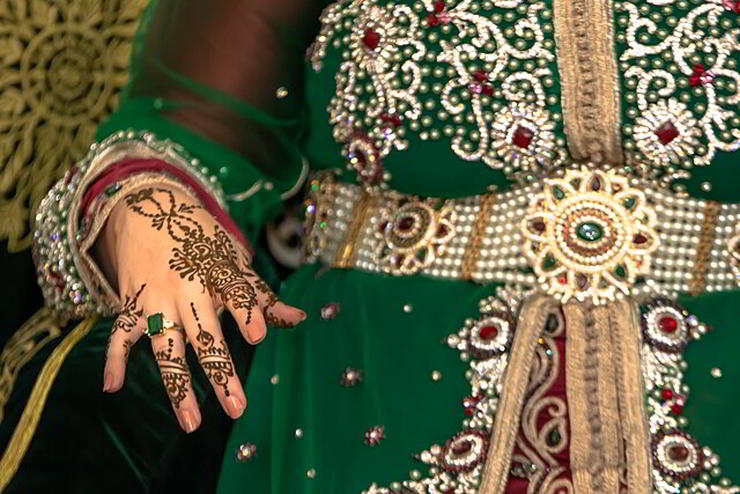Henna, recently included in the Intangible Heritage of humanity by UNESCO, is a centuries-old tradition in Morocco and throughout North Africa. Used in important ceremonies such as weddings and religious holidays, it is also a symbol of family and social ties.
Among the recent inscriptions in the UNESCO Intangible Cultural Heritage of Humanity is henna, a natural dye derived from the Lawsonia inermis shrub. Henna’s candidacy was supported by 16 Arab countries, from the Middle East to North Africa. Among these, Morocco where, Rfi emphasises, the tradition is still very strong.
Henna is a centuries-old tradition in Morocco, as well as throughout North Africa and the Middle East. Its origins date back to ancient Egypt and since then it has become a central element of Moroccan culture and traditions. The application of henna in Morocco is much more than an artistic form: in addition to the value of decoration, it is a moment in which family and social bonds are strengthened.
The application of henna is part of a deeply felt ceremony in Morocco and occurs in all the important moments and central passages in the lives of women, but also men, such as weddings, holidays and religious celebrations such as Eid al-Fitr or Eid al-Adha. “From birth to death,” exclaims Khamissa, a henna artist known as “nekacha.” “In some regions, when there is a death, three days after the burial, each person applies a little henna to chase away sadness and allow life to go on. Henna is always with us.”
Expert artists apply the colour by using cones or fine-tipped brushes to trace complex designs on the skin: floral patterns, eyes, geometric shapes… Once applied, the paste is left to dry, leaving a reddish-brown stain. The longer the paste remains on the skin, the more intense and long-lasting the colour will be.
In addition to its symbolic and ritual meaning, henna is recognised for its medicinal virtues, given its antiseptic and soothing properties for the skin.
The link with tradition is consolidated, but henna in Morocco has also been able to adapt to modern times. Today women choose to apply it not only on holidays but as body art and to affirm a form of personal artistic expression. (Photo: CC BY-SA 4.0/Brahim Faraji)







